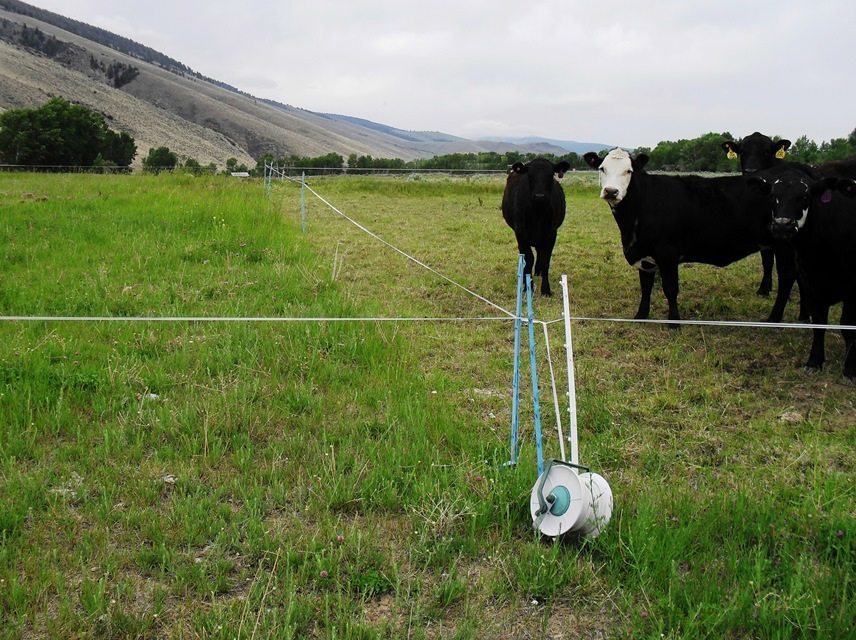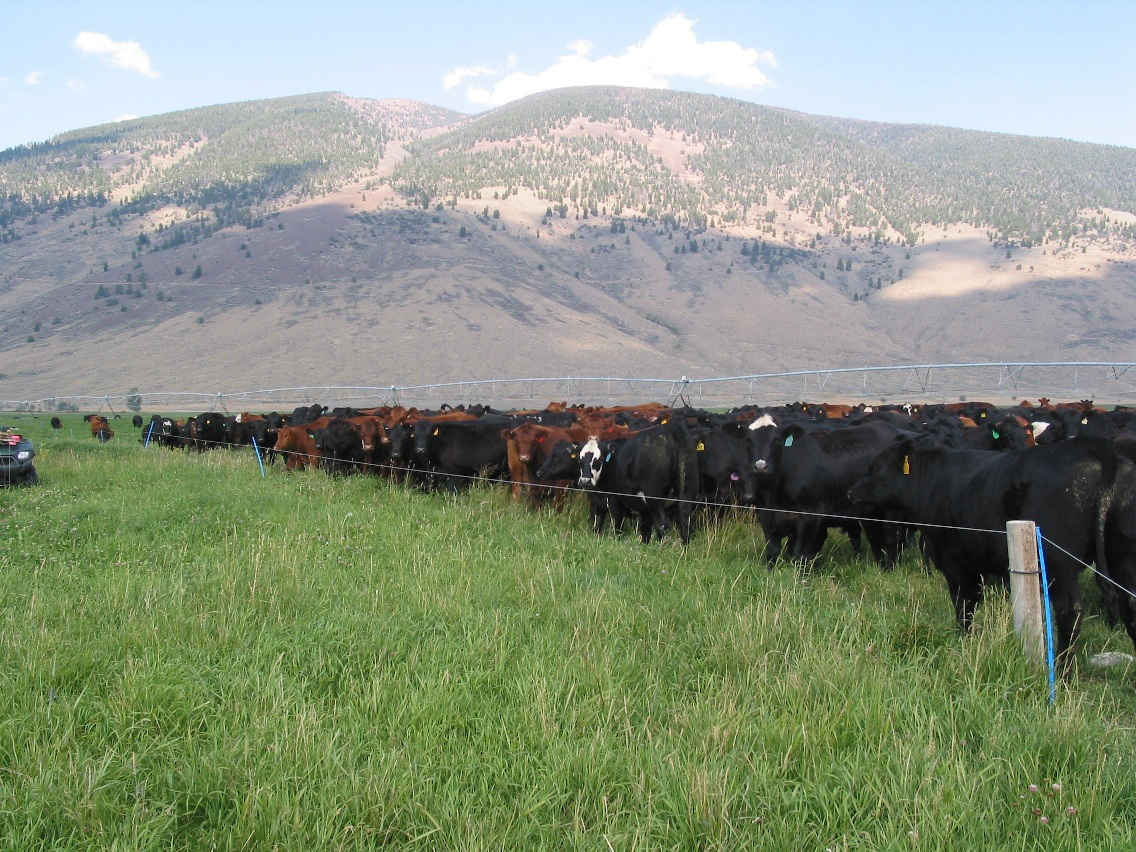Resources
Flexible Grazing Cells Are for Small or Large Operations
One of the things we learned early on in our experience with grazing management is that calendar based pasture rotation simply doesn't work. Mother Nature doesn't follow the calendar and neither should we. One of the hallmarks of Management-intensive Grazing is flexibility. We need to be able to adjust the relative length of our grazing period and recovery period on an ongoing basis. That means the size of our paddocks needs to be flexible also.
When we first started setting up the grazing cell at our farm in Missouri back in 1983, we built lots of small paddocks with permanent hi-tensile fence. Eventually we ended up with over 70 paddocks on our 260-acre farm. The last pastures we split up we used a lot less permanent fence and began using more temporary electric fence to do our subdivisions. Our subdivisions weren't always in the same place and we learned that it is very easy to build way too much permanent fence. With easy to use temporary fence products, there isn't a need for a lot of permanent fences and we moved away from a fixed or rigid grazing cell design and towards a flexible grazing cell.
 Here in Idaho we have fully embraced the flexible grazing cell approach. We own a small property in addition to running one unit of a large ranch. Our pasture is just 16 acres and all we do with it is
custom graze some replacement heifers for one of the neighboring ranches. The only permanent fence on the 16 acres is the perimeter. We do all of the internal subdivision with temporary fence. Most days
the only source for stock water is a small continuously flowing stream that runs across most of the lower end of the property.
Here in Idaho we have fully embraced the flexible grazing cell approach. We own a small property in addition to running one unit of a large ranch. Our pasture is just 16 acres and all we do with it is
custom graze some replacement heifers for one of the neighboring ranches. The only permanent fence on the 16 acres is the perimeter. We do all of the internal subdivision with temporary fence. Most days
the only source for stock water is a small continuously flowing stream that runs across most of the lower end of the property.
We set up what I call "grazing corridors" running from the bottom side of the property to the top side. Each corridor is just a couple hundred feet wide. We then strip graze up the corridor moving away from the stream. Generally I try to make the corridor of a width such that three daily moves will cover the corridor. Then we move to the next corridor. I will have three long temporary fences set up to create two corridors, the one the cattle are in and the one they will be moving to next. We use two short reels to create the strips within the corridor. When the cattle leave, there are no temporary fences left in the field for the elk, deer, and antelope to bother. The system works remarkably well.
A mile-and-a-half down the valley, we operate on a completely different scale with 450 pivotirrigated acres, 90 acres of flood irrigation, and several hundred acres of desert rangeland. We typically run somewhere between 350 and 550 cow-calf pairs or a combination of cows and heifers. For someone used to working with much smaller herds, the initial thought might be we would need lots of permanent fence. Surprisingly, the entire 1,000+ acres here is only in ten permanent pastures yet we still run a daily rotation here also.
How do we do it? With the same basic approach of creating grazing corridors with a limited amount of permanent fence and then filling in all the blanks with temporary fence. I also used to think flexible cell relying on temporary fence could only work on fairly small scale outfits.
 These cattle are on a 300-acre
center pivot. There are only
two permanent fences on this
300 acres, yet we graze this
herd of roughly 400 pairs
with daily rotation. The
fences are two circular 2-wire
hi-tensile fences. One on the
perimeter and the other
located halfway between the
pivot center and the outer
reach of the sprinklers. There
are six permanent water tanks
located around the inner
circle fence. We will stripgraze
away from the tanks for
three to four days each and
then move on to the next
tank.
These cattle are on a 300-acre
center pivot. There are only
two permanent fences on this
300 acres, yet we graze this
herd of roughly 400 pairs
with daily rotation. The
fences are two circular 2-wire
hi-tensile fences. One on the
perimeter and the other
located halfway between the
pivot center and the outer
reach of the sprinklers. There
are six permanent water tanks
located around the inner
circle fence. We will stripgraze
away from the tanks for
three to four days each and
then move on to the next
tank.
Exactly the same concept as what we are doing on our little 16-acre pasture. The only difference is on the larger acreage we needed some strategically located permanent fences to create workable corridors. Whereas on our small property my daily strip-grazing requires me to move a couple hundred feet of fence, on this 300 acre pivot, I move about 1,000 ft of fence each day. By using the right tools for strip-grazing my daily chore time is still usually less than 30 minutes.
It really doesn't matter what scale you are working on, you can make a flexible grazing cell with daily or more frequent moves work very easily as long as you lay the cell out appropriately and use the right fencing tools and techniques.








